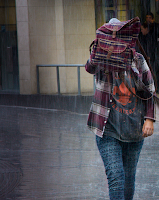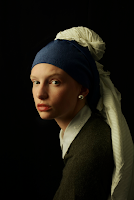Part Four- Location
The theme I chose for Pairs in day was using depth of Field (shallow and deep) in a lot of my images I have used this technique and found that it is a strong theme to use, I love using it and feel it draws the viewer into the image and adds contrast and empathy. Also fog in the background is another property my four images have in common it reminds me of the work from Todd Hido they have a sense eeriness and lifelessness.
This Image has to be my favourite out of the four
all because of the way the fog washes out the Eiffel Tower in the background
its a great way to draw the viewer in because the tower isn't defined even
though its focused on the image its quite hard to view it unless you’re close
up to the image.
To achieve a great photo I had to think about the
composition, the lighting and whether or not too much or too little is
happening in the shot, for this image I believe its simple but it works well
because I have used depth of field which adds contrast to it, also with the fog
sitting over the building in the background it adds atmosphere and a different
look to the image unlike on a clear day.
Unfortunately my four image isn’t as great as the
other three this is because of the little level of fog compared to the others
and that I found the theme on a later date which then made it tough to come up
with a set of four photos that had a consistent theme throughout. I have learnt
that in future come up with a theme before shooting therefore it makes it
easier to focus on the shots.
For Paris at night I took snippets of inspiration
from a lot of the night photographers we looked at as a class, I chose to base
my night time photos of Paris on Lights and how I can portray Paris at night
using a variety of techniques. Robert Adams (Summer Nights) photos are
brilliant; he is great at creating a dark empty atmosphere and intensifying the
contrast between the black and white. I have taken great interest in Robert
Adams work and in my own style but inspired by him I will try to make Paris at
night an atmospheric place.
I Shot an image of the street lights in France
using the rule of thirds by using this I have made my photo strong to make it
even stronger I applied a Cream-tone effect it still has similarities to Black
and White like it adds tone and depth to the image and eliminates distractions
which helps to emphasize the shot. However I love the way Cream-tone adds a
vintage property to the shot it adds to the image making it quite peaceful and
beautiful. I believe in this shot I have portrayed France at night in a
mysterious way especially with the old style lights that eliminate the street
but still keeping a strong contrast in the shot.
I kept with the cream-tone so my Paris at night
images had consistency, using long exposure I was able to produce a messy shot
that looked great with the street lights star bursting and streams of light
from the traffic, I like how sharp the image is and the contrast from the tones
that catch the viewers attention. I have learnt to always take more photos of the same shot
just to ensure I get it and to try it in different angles.
My third shot is of St Michael’s canal the textures
of the waters relate to the fast motion of the traffic in my second photo they
also have reflection of the lights in common both images. Although the canal is
fast moving and rapid it also has a calm aspect to it I love the contrast
between this and also the strong bold tones of the shot.





























